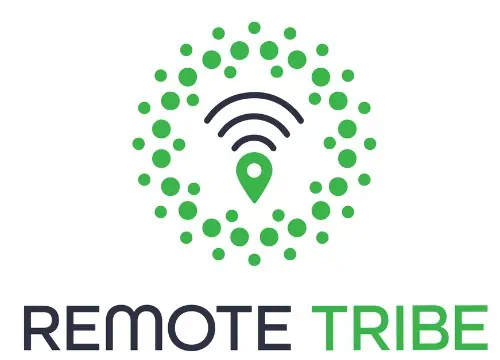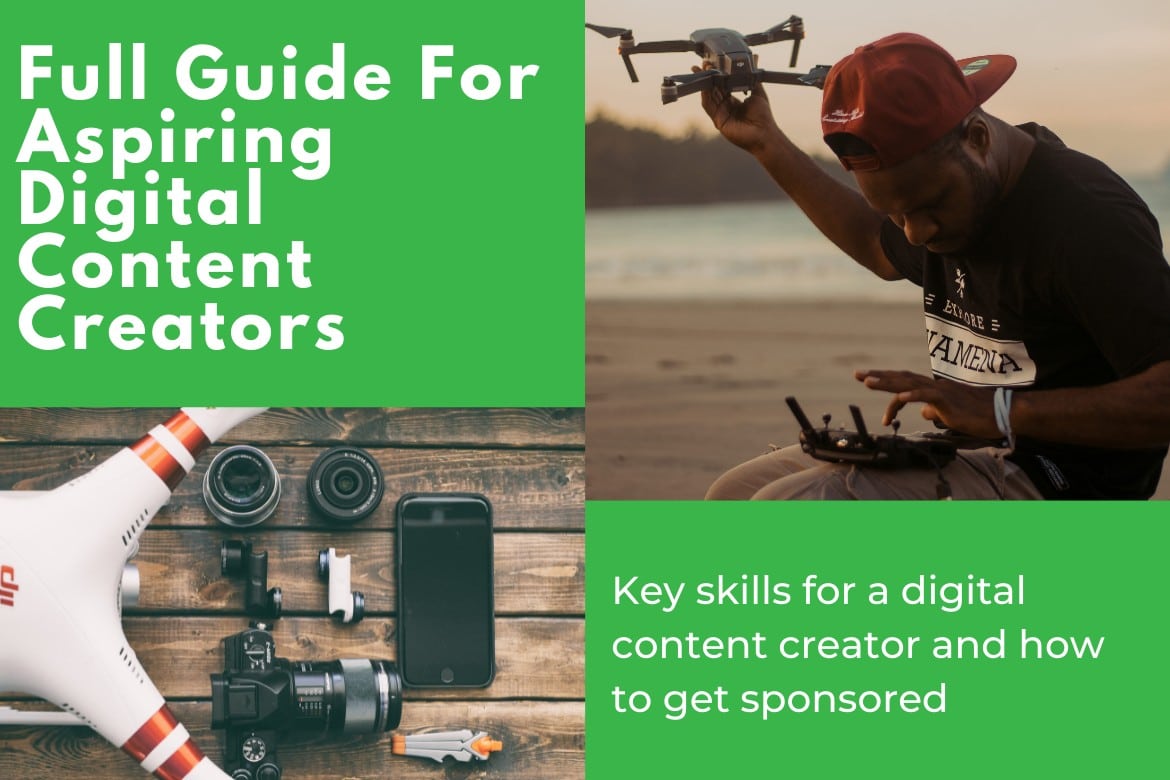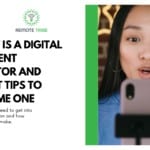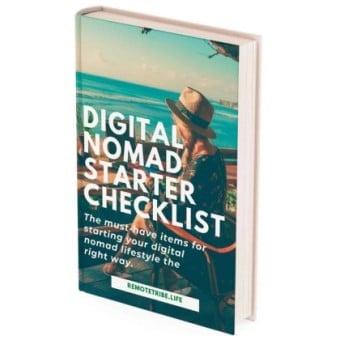What is a digital content creator?
A digital content creator is someone who produces content for digital media. Digital content includes blog posts, marketing copy, social media posts, audio, videos, graphic designs, and reviews of products and software, among others. Many businesses seek to establish and grow their brands on the internet with digital content. Getting specialized services to create engaging content for their audiences can help businesses grow their brands faster. For example, travel companies will generally use the services of writers, photographers, and graphic designers to create content for websites, social media, and marketing material. According to the description of the “Digital Content – Global Market Trajectory & Analytics” report by Research and Markets, the estimated global digital content market was US$161.9 billion in 2020 and is expected to be US$367.1 billion by 2027.
What does a digital content creator do for income?
-
Creating content for third parties
Writers, for example, create written products such as articles, marketing material, and website content, for external parties. Similarly, graphic designers, photographers, and other content producers earn a living by offering their services to third parties. They attract a range of prices based on their skills and experience levels.
-
Selling own products
A popular and lucrative income generation method is selling products such as eBooks, courses, photographs, and merchandise. These products can have higher profit margins and income potential than creating content for third parties. Selling products and services also help content creators grow their brands. If you are an expert in a particular field, for example, you can sell a course to share that knowledge with others. Many bloggers have blogging courses.
-
Collaborating with other content creators and brands
Digital content creators collaborate to create and sell products and services to a larger audience. They also enter into partnerships with related brands. For example, a fashion blogger may partner with a clothing brand and get paid for promoting their products on social media platforms.
-
Affiliate marketing
Affiliate links are a popular income stream, where digital content creators recommend third-party products with their content and earn a commission when someone purchases through their link.
-
Advertising revenue
Advertising is another popular income stream for content creators such as bloggers and YouTubers. There are prerequisites to participate in advertising programs, however. For example, a blog will be required to have a certain number of sessions or page views to qualify, while a YouTube channel will need a minimum of 1,000 subscribers among other criteria.
-
Receiving donations
It’s common for fans to pay for access to unique content. Many digital content creators use the Patreon platform to share content packaged into ongoing subscriptions. Some also include donation options on their websites.
Get our best tips FOR FREE and learn how to become a successful digital nomad and work from anywhere!
PLUS top advice on everything related to location independence lifestyle:
- Coliving
- Working locations
- Making money online
- Travel advice
- Nomad interviews
Digital content creator – is it worth it? How much can digital content creators really make?
The earnings across digital content creator jobs can vary.
Zip Recruiter reported the average digital content creator salary in the United States at US $49,045 as of April 22, 2021. Let’s look at a few other income examples:
Alex and Lauren at Create and Go, a blog that helps people make money blogging, earned over US$104,000 from two blogs in just March 2021. Over US$52,000 of their income was from affiliate marketing, while over US$48,000 was from selling digital products and services.
Vanessa Lau who helps content creators and coaches, disclosed her earnings of over US$ 70,000 from YouTube AdSense in 2020 with ~400,000 subscribers. She also stated her total profit for 2020 as a content creator was over US$2.5million. Note that YouTube earnings can differ based on a range of factors. Vanessa stated earlier in April 2020 that she had six income streams that earned her over US$80,000 a month. They were selling digital courses, one on one coaching and consulting, YouTube AdSense, affiliate marketing, working with brands, and investing in shares.
They were selling digital courses, one on one coaching and consulting, YouTube AdSense, affiliate marketing, working with brands, and investing in shares. Influencer Marketing Hub states that a micro-influencer, that is someone with a following of 10,000 to 50,000 would typically be paid US$100–500 for a post.
Digital content creator job requirements
A digital content creator can be a freelancer or a full-time employee. Freelance content creation is especially popular among those who want a flexible lifestyle such as digital nomads. Statista reported that 57 million people were freelancing in the United States in 2019.
Organizations hire freelancers to lower their costs, find specialized skills, and have flexibility; hiring for short-term projects for example, among other reasons. To be a digital content creator, you’ll need skills and experience around the content you are creating.
This could be education and certifications, but more importantly practical experience. You can showcase skills and experiences through a portfolio of work and reviews from other clients.
Companies want to know how content creators can add value or solve a pain point in the organization efficiently. They want to use your specialized skills to generate high-quality content that helps grow their businesses. They’ll also be keen to see if you can align yourself with their goals. Remember to highlight your unique value proposition, that is, “why they should hire you vs other content creators?”.
Key elements of a digital content creator resume and how to get sponsored
A digital content creator resume may or may not be in a similar format to a traditional resume. Content creators, especially freelancers, also use LinkedIn profiles, freelance platform profiles, portfolio websites, or own websites as resumes. Here are some key elements to keep in mind when creating your digital content creator resume. Summary of your profile and services
1. Summary of your profile and services
Companies want to know who you are and what you do before they read further. Highlight the exact services you provide at the beginning. A clear and focused summary will especially be helpful if you have a diverse background or offer a variety of services.
2. Work Experience
If you are sending a resume to a particular company, understand their specific digital content creator job requirements and highlight your relevant work experience.
Mention what you’ve done in the past including any achievements. Be as specific as you can. If you are a copywriter, for example, saying how your copy increased conversion by x% is better than a vague statement about how you provided copy that drove action.
If you are a freelancer who has no prior experience, you can create some sample work and include them marked as samples on a portfolio page. You may also have other samples from sources such as volunteer experiences.
3. Education and learning
Mention your educational qualifications and any specific training or learning you’ve undertaken that helps the services you are offering. If you don’t have any formal education such as a university degree, highlight other related training, including any ongoing learning.
4. Relevant Skills
Focus on your skillset including soft skills that may help you stand out. For example, you may speak other languages, be skilled in certain digital tools, or work well under pressure.
5. Extra-curricular activities
You can also include a glimpse of your personality or life, such as if you have traveled extensively, any sports you engage in, or interesting passions and hobbies. Remember, diverse life experiences enhance your creative work, and people like interesting backgrounds. Keep it brief to not take too much space.
6. Personal details
State any required individual information and your contact details. Don’t let potential clients browse through your portfolio looking for a contact method, because you may lose them halfway.
7. Follow the required format
If you are sending digital content creator resumes to organizations in particular countries, ensure you follow the standard resume format. For example, resumes in the United States are shorter than resumes in some countries. Check what else is generally required such as cover letters and photographs.
If your resume is a LinkedIn profile or a website, then ensure it’s well organized and presented. People spend little time on resumes, so capture their attention at the beginning and make it easy to read. Give attention to details and avoid careless errors in your resume or profile.
How to get sponsored
Getting sponsored by companies can be a lucrative income stream for most digital content creators such as bloggers, podcasters, and YouTubers. Here are a few ways you can attract sponsors.
1. Establish yourself on social media
Most companies that want to sponsor content creators on social media platforms such as Instagram or YouTube will want to see your performance in those channels. So, ensure you are consistently posting high-quality content and growing an engaging audience.
2. Use sponsorship platforms
Sign up for platforms that help content creators connect with sponsors, such as tinysponsor and adshot. There are many platforms to choose from.
3. Reach out to brands directly
Find companies that you want to work with. Research which brands are sponsoring similar content creators.
You can write to them directly and offer to promote their products by explaining why you want to work with them and the benefit they’ll receive. Remember it’s about them, so, focus on what you can offer.
4. Network online and offline
Most freelancers are familiar with the importance of networking online. Sometimes brands will find you via these platforms.
Remember to also network in daily life and genuinely get to know others at professional events, conferences, courses you participate in, etc., and you may get an introduction to a company that wants to sponsor you.
A few practical steps on how to become a digital content creator
If you are an aspiring freelancer, digital nomad, or someone after a full-time job, wondering how to be a digital content creator, here are a few practical steps to keep in mind:
1. Decide what content you want to create
Consider what digital content you love to create or are good at naturally. Have you studied or worked in related areas? Check the demand and the competition for the content you wish to create. Low competition with high demand would be the sweet spot, but digital content creation today is highly competitive in general. You can niche down and differentiate yourself to succeed in a competitive environment. Find a specific type of content you can offer to a very targeted audience.
2. Keep learning
Digital content creation keeps evolving and there’ll be much to learn as you go. If you intend to start a blog for example, in addition to writing, you’ll also need to learn search engine optimization, how to drive traffic from social media, and digital marketing, among other things. Keep learning and stay current in the growing digital world.
3. Develop a strong portfolio
Accumulate experience and ask for testimonials from your clients. As discussed earlier, you will need these to promote your services.
4. Join the right platforms
If you are wondering how to become a digital content creator, consider joining relevant platforms such as social media, to market your content, find clients, or get sponsorships. Focus on growing your brand on these platforms.
5. Grow your network
As discussed earlier, expanding your network is important to become a successful content creator. You may have to hustle extensively early on, but as you grow your brand and provide consistent high-quality content, finding clients will become easier.
And they will find you!
Are you an aspiring digital content creator?
We hope this information will help in your journey to be a digital content creator. Keep producing content, learning, and networking, even when you feel like giving up. Success may take some time, but with perseverance, you can have a fulfilling career and life as a digital content creator.








